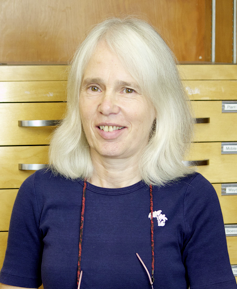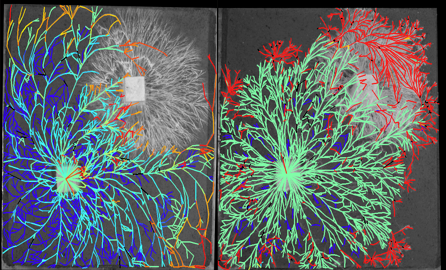10.1.14: "Fungus Wars: Why and How Fungi Fight Each Other"
Wednesday, October 1, 2014 | Noon | 101 Barker Hall #101
Reception to follow in 338 Koshland Hall
 By Karyn Houston
By Karyn Houston
Plant & Microbial Biology
Lynne Boddy is a fungal ecologist from Cardiff University, Wales, UK. She is especially keen on anything to do with wood decomposition. She has pioneered work on the fungal community structure and dynamics of wood. She is intrigued by fungal interactions and how these change patterns of fungal community structure and development. Though mushrooms and brackets are the obvious part of fungi, Lynne is interested in the mycelium – the ‘business part’ of the fungus. She investigates the network architecture of mycelia growing in soil, and her work has revealed the foraging ecology and key roles of cord-forming basidiomycetes in nutrient translocation and wood decay in forest ecosystems. Also, her group has made major advances in understanding the effects of invertebrate grazing on fungal foraging, communities and nutrient release. In the last 10 years her interests have expanded to encompass climate change, revealing major phenological trends in fungal fruiting (implying major changes in mycelial activity), crucial to ecosystem functioning. Lynne is a leading authority on basidiomycete ecology, and has published over 250 papers and books on the ecology of wood decomposition.
In her talk, Lynne will open our eyes to the exciting world of fungal battles. As well as explaining what we currently know about how, why and when fungi fight, she will also touch on how this affects the structure and functioning of fungal communities, and why this is important to decomposition and nutrient cycling. Not only is the science fascinating but also the images are dramatic and sometimes aesthetically appealing.
“Fungus Wars: Why and How Fungi Fight Each Other”

